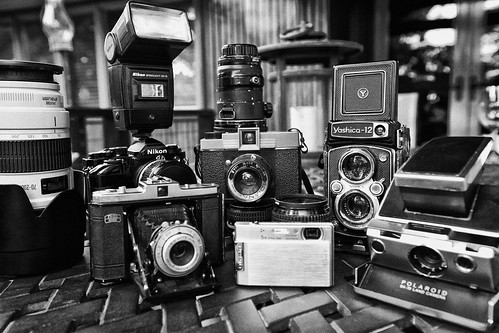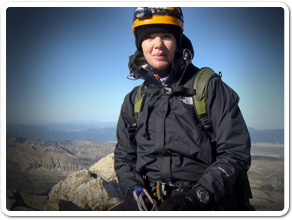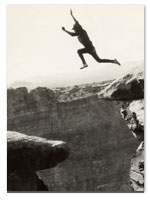SRT Equipment
Film photography is my favorite, more specifically Black & White. But digital is so much more portable, storable, all the good ‘ables and I’ve largely converted to it. Digital lacks nostalgia, will always lack nostalgia. And from an appeal perspective, that’s a shortcoming.
SRT Equipment:
Several cameras are in the SRT arsenal. All lovingly used, some I’ve had for a very long time. For the most part I’ve converted to digital having recently purchased a used Canon 5D. It’s a hoss and I love it. The photos are taken in color. When appropriate, I convert them in Photoshop to B&W using several of their conversion options. I’ve recently discovered a software package called Silver Efex, by Nik Software. It’s an amazing program and has pretty much helped me overcome the addiction to the darkroom.
My favorite manual camera is a Nikon FM2 (fully manual 35 mm). I have a 300 mm lens for it that stops down to 2.8. It weighs 6 pounds — what a hunk of glass! Sadly, it’s become a full time bookend; a treasured bookend nevertheless.
I also shoot quite a bit with a point&shoot Sony DSC T-100 Cyber Shot. Zeiss lens, 8.1 megapixels, can’t do anything fancy with it except for some fine macros on occasion, but it takes great pics. When I want to get attention, I shoot with a Polaroid SX-70 land camera (instant film). It goes to all the parties. And on occasion an old, medium format Yashica (120 film, Ilford SFX 200) is pulled from the bookshelf.
Now for the funkiest camera I shoot regularly: a Diana — the 1960s medium format plastic bodied plastic lens camera that was originally given away as a toy. With inherent light leaks and vignetting, it’s like Forrest Gump’s box of chocolates. You never know what you’re gonna get! I like that – it’s a refreshing break from digital.
I still shoot B&W film, although it’s become a bigger and bigger pain in the backside. My favorite brand/speed is Ilford HP4 (125 speed) and it’s shot mostly with the Nikon FM2. Agfa makes my favorite color 120 film (for the Diana). But it’s become difficult to come by, so I’m settling for Fuji’s 160 or 400 speed color. Having stepped away from the processing because of time, a local processor develops the film and I take it from there.



 About SRT... I’m a traveler, writer and photographer for whom the open road frequently summons. Adventurous solo road trips are a staple for me, and a curiosity. So I created this website to share them and inspire you to step out and give them a try. Welcome!
About SRT... I’m a traveler, writer and photographer for whom the open road frequently summons. Adventurous solo road trips are a staple for me, and a curiosity. So I created this website to share them and inspire you to step out and give them a try. Welcome! 

[…] “cheap”. Although much of it was inexpensive (some even free), every camera in the SRT arsenal is capable of taking great photos, even artistic photos. And who says you have to have […]
Pingback by Great Photos from Really Cheap Cameras — August 5, 2014 @ 7:37 pm
You are Awesome!
Comment by Caroline — July 29, 2012 @ 10:14 am